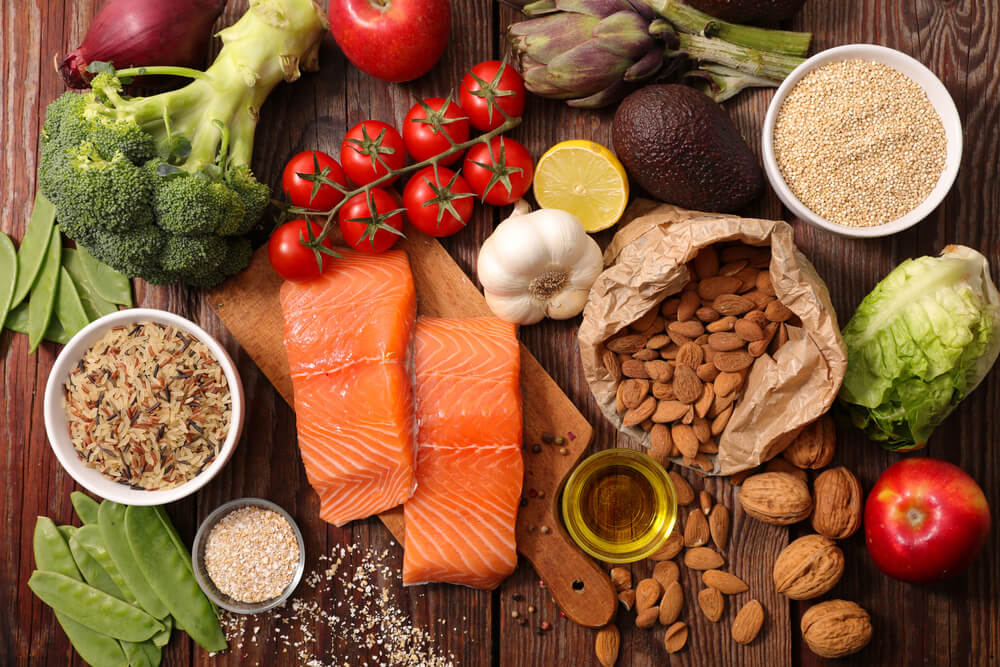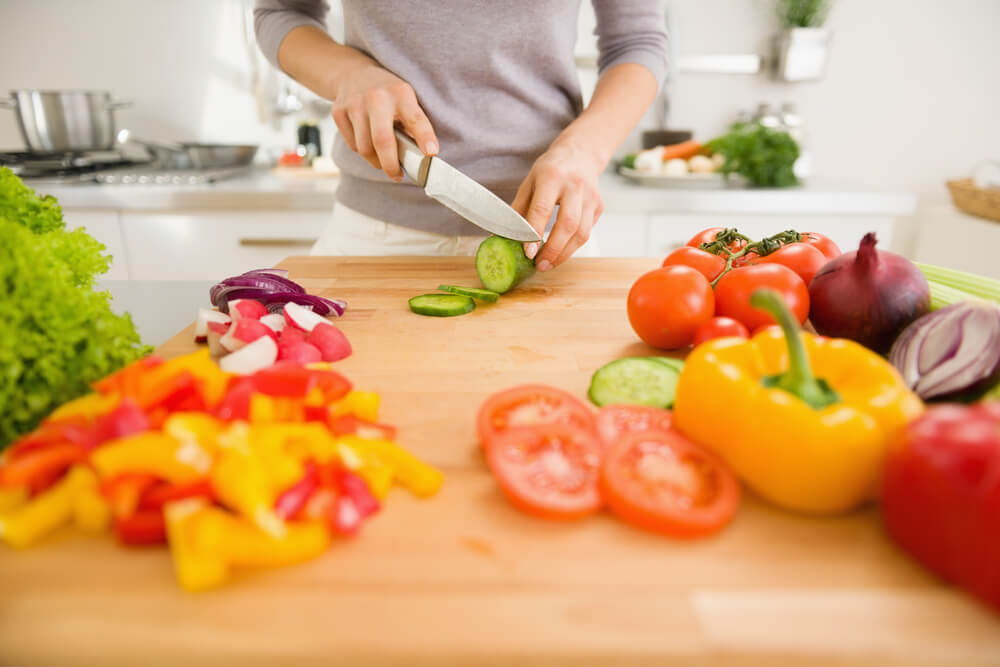
Everyone wants to lose weight—but it can be confusing to kickstart a weight loss journey. If you pick up any diet book, it’ll claim to answer all of your weight loss questions.
Between counting calories, cutting out carbs, eating more vegetables and spacing out your portions—there’s a lot of information out there!
But do all of these habits work?
Truthfully, there’s no “one size fits all” solution to weight loss. Everyone’s body is different—and, depending on your genetics and daily habits, you’ll most likely need to find out what weight loss practices work best for you.
Still, there are some weight loss tricks which seem to work for most people. There’s no easy way to lose weight, but there are some approaches which guarantee an easier time. We’ll cover the best tips and tricks around, discussing the time-tested-and-true methods for successful, and long-lasting weight loss.
Before we cover these tips, though, let’s cover the core components of a successful weight loss plan—whatever yours may be.
The Core Components
Before investing time, planning and energy into eating healthy to lose weight, it’s important to build a solid foundation. No matter what, your weight loss journey might get a little tough at times.
But don’t worry!
If you adopt these core weight loss components as healthy habits—it’ll make the rest of your dieting plan much easier.
Control Over Emotional Eating
Many of us don’t eat to stop being hungry. Unfortunately, we eat to avoid being sad, angry or anxious. This can really mess up a diet—and it can definitely pack on some pounds. So, when do you find yourself eating the most? Do you tend to snack when you’re bored? What about when you’re worried, stressed out or lonely?
By recognizing the emotional “triggers” behind your eating habits, you’ll set yourself up for success. Because eating healthy to lose weight involved portioning out your meals, you can hit a dieting home run if you identify the source of your eating patterns.
Discipline
Next, you’ll need to find out what drives you. It’s possible to lose weight, but it’s tough to keep the weight gone. Motivation, itself, is surprisingly tough to hold onto. For this reason, we totally recommend getting disciplined, instead. You might not be motivated every day—but, if you’re disciplined, you’ll find yourself being motivated much more often.
To start building discipline, set up some goals—both short-term and long-term. Make a fun list! Make each item relatively easy to cross off. You’d be surprised how much easier it is to obtain goals if they’re written out.
Next, don’t be too hard on yourself if you’re progressing slowly.
If you can’t run, you can still walk—you know?
Losing weight too quickly can damage your body, anyway. For starters, expect to lose about one pound per week.
To help yourself do this, adopt some tools that’ll help track your progress. Here are some good ones:
- Fitness tracking apps
- A smartwatch
- A diet journal
Much like your daily “to-do” list, these awesome diet-tracking tools will make your weight loss journey much easier. There’s nothing quite as motivating as seeing the numbers drop, week to week.
A Healthy Environment
Most people struggle with weight loss if their environment isn’t fine-tuned to success. You don’t necessarily need to overhaul your house, but making it a healthier space will certainly help your journey.
For starters, get ready to plan your meals ahead of time. We tend to munch down on snacks if they’re available while we’re too busy to cook. Try cooking your meals during your spare time—setting up a solid meal plan for the next day.
Next, try swapping out your big plates and bowls for those of smaller size. This little food psychology trick really does work for reducing portion sizes—which will directly cause weight loss.
Top Tips for Eating Healthy
Now that we’ve covered the core components, you’re ready to begin your weight loss journey with some great dieting and lifestyle tips. Remember, though, that you’ll need to keep the above-mentioned core rules in place for these other tips to work at their fullest potential.
Let’s unlock the doors to eating healthy to lose weight, one tip at a time.
Tip One: Reduce the Calories
This is probably the best weight loss tip. Many experts believe that eating fewer calories than you burn is ideal for weight loss. In your first weeks of eating healthy, you might even lose a good few pounds—as a reduced caloric intake results in loss of water and fat alike.
As you progress through your weight loss journey, however, you’ll need to further reduce your calories. This is because your metabolism is determined by your weight: If you weigh less, you’ll need to eat even fewer calories to shed some pounds.
Here’s the best part: A calorie is a calorie, regardless of where it comes from. 100 calories of corn syrup, for example, is the same as eating 100 calories of broccoli. Still, it’s important to know what foods might result in weight gain. Carbohydrates and sugar, for example, may not be compatible with your body’s needs—resulting in weight gain. Either way, calorie counting is your best tool for fat loss.
Tip Two: Reduce the Carbs
Carbohydrates have a lot of calories. By default, reducing your carb intake—replacing it with meals packing fewer carbs—is a great way to manage your weight. There’s another reason cutting carbs can aid fat loss, too: Your body accumulates fat after you consume carbs if these carbs aren’t burned off.
When you eat a meal with carbohydrates, the carbs enter your blood as glucose. To keep your body’s blood sugar levels in check, your body expends glucose for energy. Once this is done, it’ll burn off stored fat as energy.
Eating a carb-heavy meal, like pasta, bread or rice, makes your body release insulin to help with the glucose spike—regulating your blood glucose levels. Insulin also prevents fat cells from mobilizing as fuel, storing any leftover fuel within these fat cells for future use. In many ways, eating too many carbs can create a vicious cycle of fat gain—as you’ll crave more carbs to make up for those burned or stored after an insulin spike.
Tip Three: Eat Fruit and Vegetables
Fruit and vegetables are fantastic replacements for regular snacks. Low in calories, as well as fat, they’ll satiate your hunger without adding pounds.
They’re also high in fiber—which will help you digest nutrients vital for fat loss. Packed with vitamins and minerals, too, green foods help your body get balanced enough to maximize its fat-burning potential.
Tip Four: Eat the Right Fats
We don’t want to tell you to avoid eating fats in general, because some fats are good for you! Unfortunately, a lot of weight loss advertisements—even those in grocery stores—talk about reducing fatty snacks, packaged meals and dairy. Low-fat options can certainly help with weight loss, but not every high-fat food should be avoided.
Healthy fats can help regulate weight, improve your mood and reduce fatigue. The unsaturated fats in nuts, seeds, avocados, tofu, fish and avocados are great examples. These fats will make you feel fuller, helping you reduce any cravings for other, calorie-dense foods.
By consuming the right fats, you can avoid consuming empty calories like refined carbohydrates and sugar. Try eating whole-fat yogurt instead of low-fat yogurt packed with sugar, or swapping out your breakfast muffin for some fatty bacon. You’ll be surprised by the positive impacts.
Tip Five: Reduce the Sugar
Speaking of sugar, did we mention your body craves it? Many of us consume an unhealthy amount of sugar, eating plenty of pasta, pastries, bread, cereal and sweeteners. It seems like sugar hides in every type of food, these days, just waiting to spike your blood glucose and cause weight gain.
The sugar-based calories from fructose, which exists in soda and processed foods, can definitely make your belly wider. By swapping fructose-heavy foods out for whole-grain foods, however, you can fuel your body without experiencing extra fat. Try eliminating soda and candy, and eat brown rice and whole wheat breads instead.
Tip Six: Drink a Lot of Water
Surprisingly, thirst can be confused for hunger. If you’re trying to consume fewer calories, you can “trick” your brain into thinking you’re full by drinking more H20. Sometimes, a glass of water is all you need.
Water can also regulate your digestion, helping you absorb as many vital vitamins and minerals as possible. Paradoxically, consuming more water also reduces water weight: Your body stores extra water if it thinks it isn’t getting enough water—sort of how a camel stores water for long trips across a desert.
So, if you’ve noticed some extra weight in your midsection—or even a puffy face—you might just be a little dehydrated. Try increasing your water intake over the next three days, as you just might find your body will drop a few extra pounds in stored water.
Tip Seven: Eat Protein for Breakfast
Protein-rich foods, such as eggs, can greatly benefit fat loss. Rather than reaching for your morning cereal, consider having some bacon, sausage or scrambled eggs instead. Try mixing in some veggies, too. If you’re in a rush, how’s about a protein drink?
A high protein intake, during breakfast, will help you feel full throughout the day—keeping you away from craving extra calories. Plus, protein can also aid your metabolism. In the same way having extra muscle helps burn fat, having extra protein in your diet can make your waistline thinner.
Tip Eight: Don’t Drink Your Calories
Protein shakes are a rare exception to this tip. In general, though, drinking calorie-rich foods can result in rapid weight gain. Sodas, milkshakes and performance-enhancing drinks often have unwanted ingredients, such as high fructose amounts, which can slow down your metabolism and imbalance your blood glucose levels.
Surprisingly, even fruit juices proposed to be healthy can result in weight gain if you drink them too often. Your best bet is to stick with water, as it’ll surely reduce the number of calories you consume throughout the day. If you’re really hankering for a tasty drink, try adding some carrot juice to your diet.
Tip Nine: Eat Whole Foods
It’s touch to keep track of everything you eat, right? Sometimes, the stress involved in dissecting every meal for hidden calories, sugars and simple carbs is enough to mess up an entire diet. Eating whole foods which don’t have an ingredient list is a great way around this.
Whole foods are guaranteed to nourish your body with nutrient-dense ingredients. They’re natural, too, so your body will digest them much easier. So, if you’re browsing the grocery store aisles, consider taking a “less is more” approach.
Products with a bunch of ingredients tend to be unhealthy, anyway, especially if most of those ingredients are additives, preservatives and sweeteners.
Tip Ten: Snack Throughout the Day
While a lot of people mistakenly cut out dishes throughout the day, eating more often can result in more weight loss. As long as you’re eating healthy, and as long as you’re still watching your calorie intake, consuming small meals several times per day can bring your diet to the next level.
This is because consuming food, in general, fires up your metabolism. If you eat frequently, you’ll keep your metabolism running—resulting in additional fat burn. Try stashing up some pre-portioned healthy snack servings, like mixed nuts or mixed vegetables. Then, if a hunger craving strikes, you’ll already be prepared.
Conclusion
Eating healthy for weight loss might seem unpleasant, at first, but it can actually be fun!
Make time for your healthy lifestyle, and browse some tasty meal options which contain beneficial vitamins and minerals. The possibilities are endless when you are eating healthy.
When combined with healthy exercise, a healthy diet can do wonders for your body. From fat loss to healthy skin, nutrient-rich foods can completely change your day-to-day lifestyle.
Find meals and activities which make you happy. Before long, you’ll find that sticking to this healthy lifestyle isn’t tough at all.
-Terry Asher
Terry Asher
Latest posts by Terry Asher (see all)
- Better Family – Product Review Liquid Daily 2 oz - Dec 16, 2024
- Post-Workout Recovery: The Key to Optimal Performance - Nov 25, 2024
- Pre-Workout Supplements – Everything You Need To Know - Nov 18, 2024















[…] post Eating Healthy to Lose Weight: Our Top Tips appeared first on Gym […]
[…] Read The Entire Article By Terry Asher Here. […]
I like your article very much, thanks for sharing the good information we have read.
[…] weight loss coach can help you build healthy habits over time, assisting you in completely revamping your lifestyle to promote a higher degree […]
[…] and a healthy diet are fantastic counterbalances to sitting all day, and many exercise clubs have adopted exercise […]
[…] diets and cleanses state you can only consume a few small meals a day, or you might be instructed to drink vinegar water with spicy peppers inside it and that’s […]
[…] we want to focus on optimizing our health and reduce overall stress. Eventually, as you get healthier and in better shape, you can begin to progress the caloric deficit and train harder. Ultimately, […]
[…] we want to focus on optimizing our health and reduce overall stress. Eventually, as you get healthier and in better shape, you can begin to progress the caloric deficit and train harder. Ultimately, […]